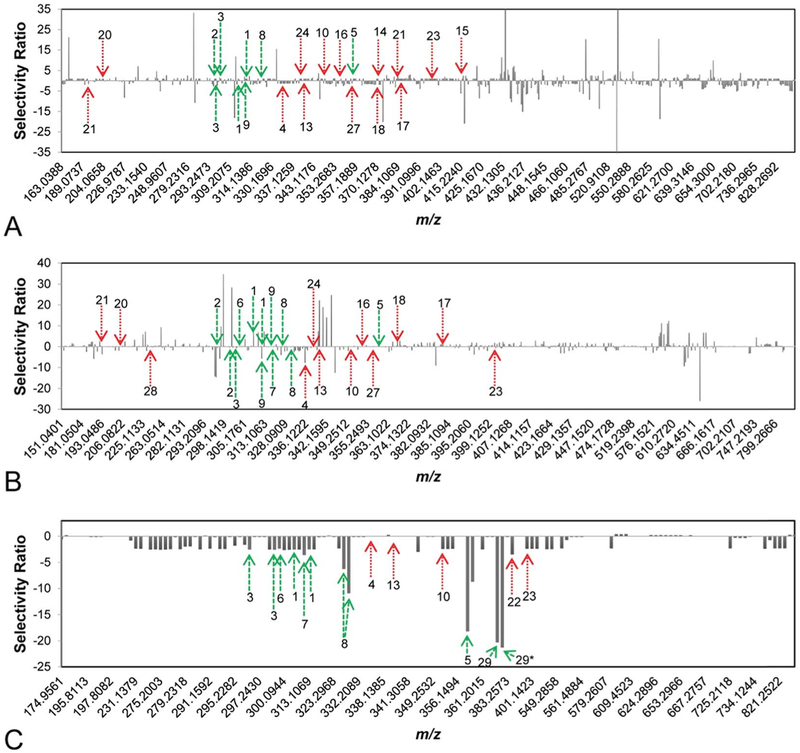Fig. 8.
Selectivity ratio plots for first, second, and third stages of fractionation [(A–C), respectively] of the botanical Hydrastis canadensis. Growth inhibition data were used to guide selectivity ratio analysis, so variables with negative selectivity ratio are most likely to possess additive or synergistic activity. Known flavonoids (likely to be synergists) are marked in green, while known alkaloids (likely to be additives) are marked in red. First-stage (A) and second-stage (B) models were not able to identify known compounds as contributing to activity. However, the third-stage model (C) predicted seven flavonoids (1, 2, 3, 5, 6, 8, 29) and three alkaloids (10, 22, 23) to possess additive or synergistic activity. With this approach, a new synergistic flavonoid (29) was identified in H. canadensis, and known flavonoids and alkaloids not previously known to possess additive or synergistic activity were prioritized for future studies. This figure is reprinted with permission from Britton et al. 2017.22

